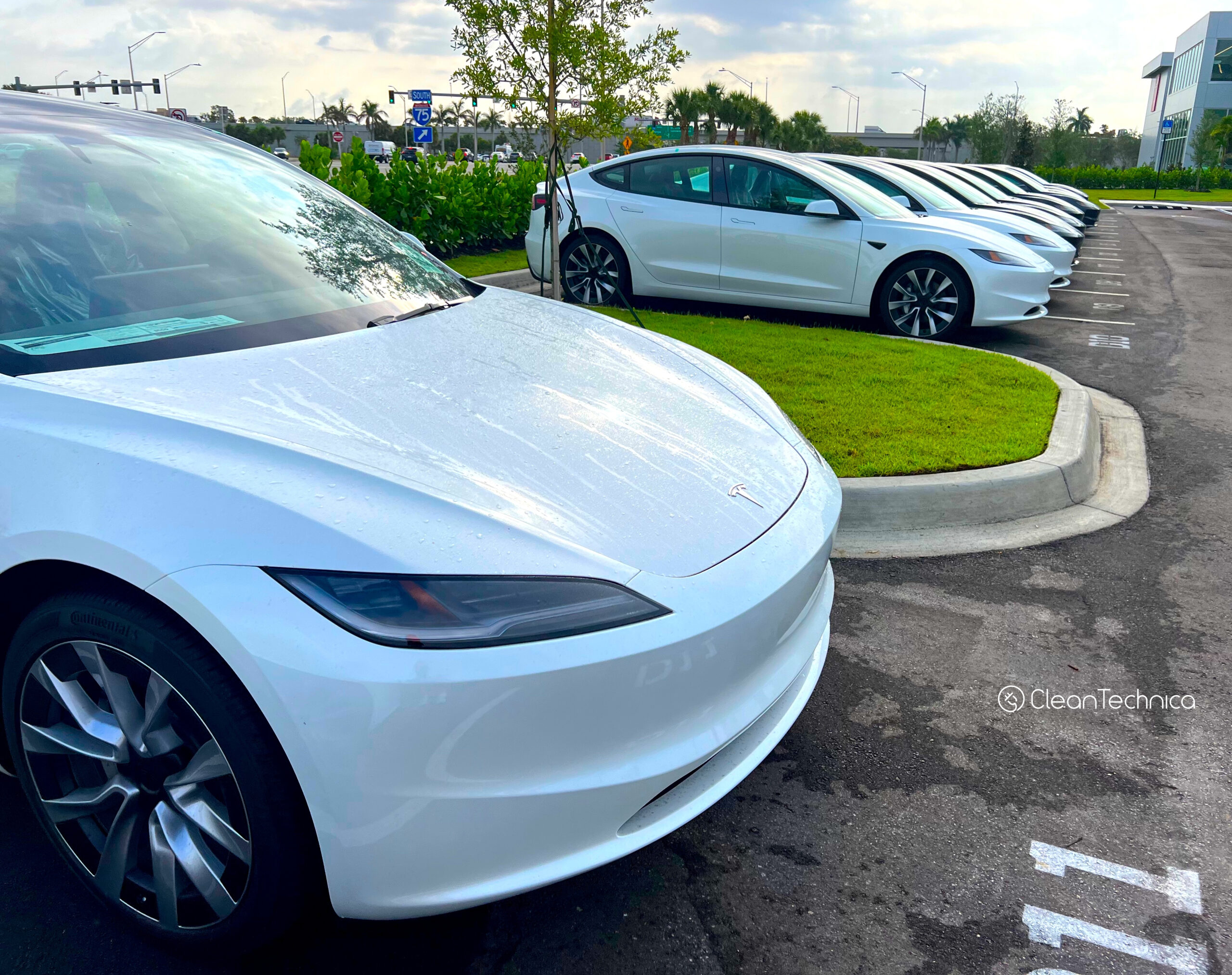Sign up for daily news updates from CleanTechnica on email. Or follow us on Google News!
The Intertubes are practically on fire with news of the latest development in solid-state EV battery technology, supported with funding from the European Union’s HELENA project. As for how all those new EV batteries will charge up, long duration energy storage is part of the answer, and another organization with Helena in its name has that in hand, too.
More And Better Energy Storage, Solid-State EV Battery Edition
CleanTechnica has spilled plenty of ink on solid-state EV battery technology, which represents the next step up from conventional lithium-ion batteries for mobile energy storage (see more solid-state stories here).
Today’s lithium-ion batteries have done a good job of launching electric vehicles into commercial production. However, they are due for an upgrade in terms of all-around performance including range and charging time.
One pathway to the next level is replacing the liquid electrolyte in a conventional battery with a solid or quasi-solid electrolyte. Naturally, getting lithium ions to barge through a solid material is a bit trickier than letting them swim through a liquid, but a series of recent breakthroughs has brought solid-state energy storage to the brink of commercial production.
HELENA Scores With New Solid-State Battery
HELENA is the somewhat awkward acronym for a broad-based, EU-funded EV battery project titled, “Halide solid state batteries for ELectric vEhicles aNd Aircraft.” In a press statement earlier this week, the organization announced that has successfully assembled solid-state battery cells with a halide electrolyte, marking the first major milestone of the project. The new cells also sport a lithium metal anode and a nickel-manganese-cobalt cathode.
HELENA also noted that its new solid-state battery can cycle at high currents and low temperatures while maintaining a high level of thermal stability, which is significant from a fire safety perspective. “It has also been demonstrated that it is possible to work with this halide in dry room conditions, thus opening up real possibilities for its application in industry,” the organization added.
If you caught that thing about cobalt, that’s something of a red flag in terms of avoiding energy storage supply chains that are entangled in conflict. However, HELENA was designed to deliver a recycling-ready energy storage solution with a goal of 90% for cobalt, which could help European battery makers work around the issue.
As for that halide electrolyte, it’s not just any old halide. In a fact sheet on the project, the EU research organization CORDIS explains that the HELENA team is “looking to produce a Generation 4b battery with a high-energy density lithium metal anode, a nickel-rich nickel–manganese–cobalt cathode and a superionic halide solid electrolyte.”
“Superionic halide” is new to the CleanTechnica lexicon, so we have some catching up to do. A paper published by the journal ACS Letters describes them as “promising solid electrolyte (SE) materials for all-solid-state batteries (ASSBs), owing to their inherent properties combining high Li+ conductivity, good chemical and electrochemical oxidation stabilities, and mechanical deformability, compared to sulfide or oxide SEs.” If you have any more information about that, drop us a note in the comment thread.
Who’s Gonna Charge Up All Those New EVs?
For all the excitement over new EV batteries, in the coming years tens of millions of the vehicles themselves will hit the roads, creating new loads on local distribution grids. Various workarounds have already emerged, including home and workplace charging as well as time-of-day incentives and “virtual power plant” setups. Ultimately, though, more long duration energy storage is needed to accommodate public EV charging stations and the electrification movement in general, especially as variable wind and solar inputs continue to increase.
So far, lithium-ion battery arrays have been the energy storage platform of choice, but they only last for a few hours. The grid of the future requires storage platforms that can last at least 10 hours or much longer — for a full day, multiple days, weeks, and possibly months as envisioned by the US Department of Energy.
That means looking beyond battery-type technology. One alternative already exists, in the form of gravity-enabled pumped hydropower. Another gravity-based approach is supported by a US investor organization called Project Helena, which also supports a roster of other game-changing decarbonization technologies.
Project Helena is new to the CleanTechnica radar, but the organization describes itself “a major investor and operating partner in Energy Vault,” a Swiss venture that has appeared on these pages for its gravity-based contribution to the long duration energy storage field (see our Energy Vault archive here).
“The Energy Vault concept is similar to pumped hydro energy storage,” we observed back in 2021. “Instead of storing electricity in a lithium-ion battery or other chemical systems, you deploy excess wind or solar power to raise something heavy upwards. When demand for electricity rises, gravity does all the heavy lifting. You allow your heavy thing — water, or in Energy Vault’s case, 35-ton blocks — to fall back to its starting point, and it generates electricity on the way down.”
At the time, Energy Vault was also attracting attention for a plan to recycle wind turbine blades as raw material for its blocks. We’re not sure what happened to that plan, though the company does indicate that its blocks can incorporate waste materials. Meanwhile, the company has been bringing its EVx gravity system to market.
So far much of the activity has taken shape in China, where Energy Vault’s first 25 megawatt/100 megawatt-hour EVx is already connected to the local electricity grid last. A second project began construction last year, towards an overall plan to develop nine EVx gravity storage facilities for a total of 3.7 gigawatt-hours.
Energy Storage By Any Other Name Would Be As Useful
The EVx system is designed as an above-ground structure that resembles a large office building or skyscraper, making it a good fit for urban environments. For that matter, perhaps some day existing buildings can be repurposed for gravity systems. After all, other gravity storage innovators are already exploring the idea of constructing similar systems underground, repurposing derelict oil wells and mining sites.
For the here and now, though, Energy Vault is not putting all of its storage eggs in one basket. The company has adopted technology-agnostic mode that deploys various technologies wherever they make the most sense.
That includes urban environments, where land for sprawling facilities is in short supply. In February, for example, the company began construction on a 293 megawatt-hour “ultra-long,” 48-hour energy storage system in the California city of Calistoga, which integrates battery-type storage with green hydrogen fuel cells to replace a diesel-powered emergency backup system. The batteries are needed primarily for “black start” processes following a shutdown.
Though the facility is described as occupying a site of less than one acre, Energy Vault describes it as the “first-of-its-kind and the largest utility-scale green hydrogen energy storage project in the United States.”
“The system will be prepared to power downtown Calistoga and the surrounding area for up to 48 hours during potential Public Safety Power Shutoffs, which occur when the powerlines serving the surrounding area must be turned off for safety due to high wildfire risk,” Energy Vault explains.
“By coupling the ultra-long duration capabilities of fuel cells using green hydrogen, and the fast response capabilities of B-VAULT™️ lithium-ion batteries, H-VAULT™ provides the clean, reliable, cost-effective back-up power that is critical to enable islanded microgrids during transmission outages,” the company adds.
Interesting! The new hybrid system is not the only example of an emerging fuel cell / battery convergence in the energy storage field. Another example is the use of green hydrogen fuel cells to power EV fast-charging stations in remote locations. If you can think of any others, drop us a note in the comment thread.
Follow me @tinamcasey on Bluesky, Threads, Post, and LinkedIn.
Image: Gravity-based energy storage system for wind and solar power courtesy of Energy Vault.
Have a tip for CleanTechnica? Want to advertise? Want to suggest a guest for our CleanTech Talk podcast? Contact us here.
Latest CleanTechnica TV Video
CleanTechnica uses affiliate links. See our policy here.





